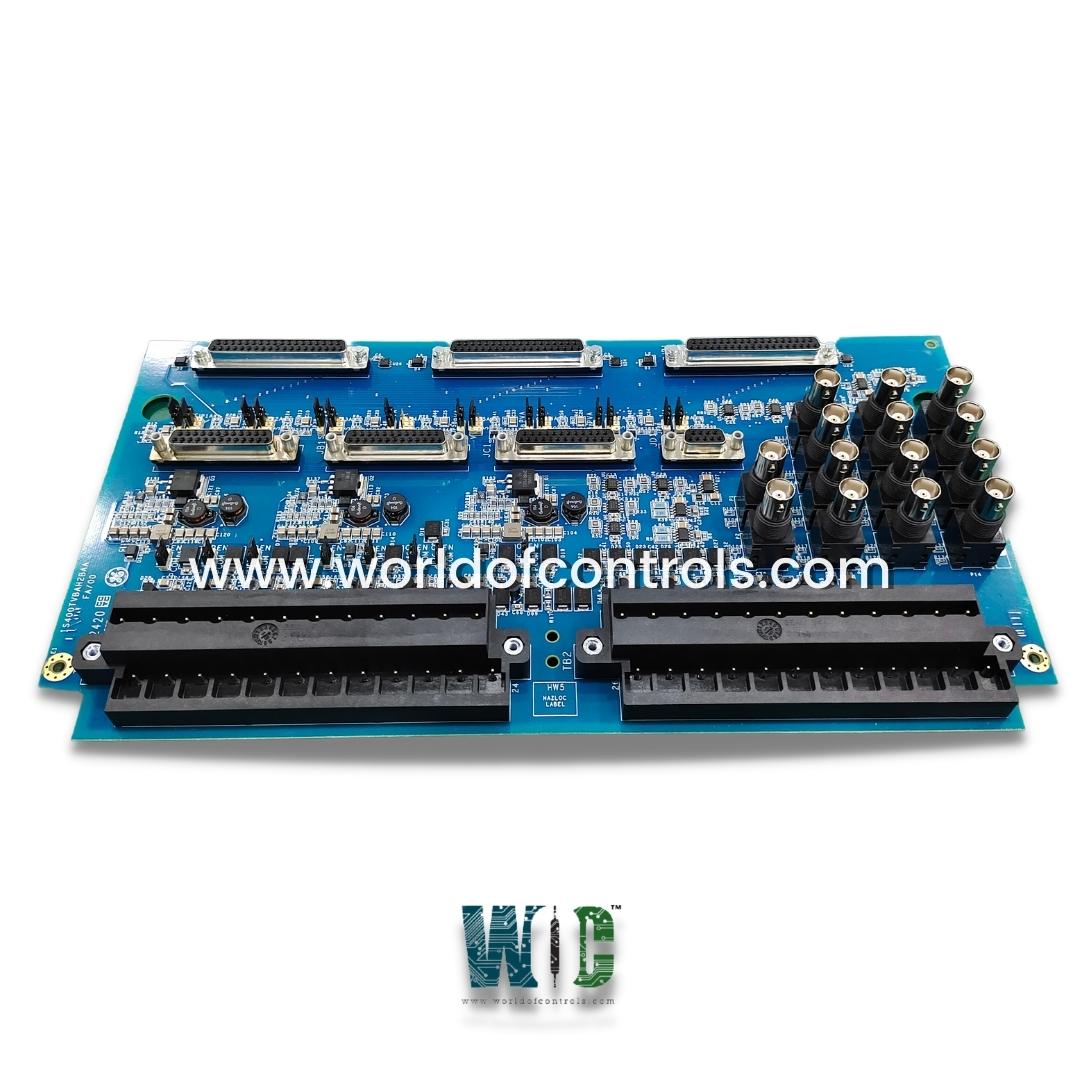
World Of Controls understands the criticality of your requirement and works towards reducing the lead time as much as possible.
IS400TVBAH2BAA - Vibration Terminal Board is available in stock which ships the same day.
IS400TVBAH2BAA - Vibration Terminal Board comes in UNUSED as well as REBUILT condition.
To avail our best deals for IS400TVBAH2BAA - Vibration Terminal Board, contact us and we will get back to you within 24 hours.
SPECIFICATIONS:
Part Number: IS400TVBAH2BAA
Manufacturer: General Electric
Series: Mark VIe
Product Type: Vibration Terminal Board
Number of channels: 8
Number of N24 outputs: 14
N24 maximum current: 12 mA
Number of buffered outputs: 14
N28 voltage: 28 normal
N28 maximum current: 400 mA
Dimensions: 7.0 in x 13.0 in
Operating Temperature Range: 30°C to +65°C
Repair: 3-7 Days
Availability: In Stock
Country of Origin: United States
Manual: GEH-6721D
FUNCTIONAL DESCRIPTION:
IS400TVBAH2BAA is a Vibration Terminal Board manufactured and designed by General Electric as part of the Drive Control Series used in GE Distributed Control Systems. The vibration terminal board (TVBA) acts as a signal interface board for the Mark VIe I/O pack PVIB. In the Mark VIe system, the VVIB board works with TVIB. The TVBA provides a direct interface to seismic (velocity), Proximitors, Velomitors, and accelerometer-type probes. The terminal board provides signal suppression and electromagnetic interface (EMI) protection for each input signal. Signals are also connected to a pull-up bias to allow open-circuit detection. The signals are passed on to the Mark VIe I/O packs through a 37-pin connector.
The TVBA can be used for either simplex or TMR applications. TMR applications fan the signal to three I/O packs. The TVBA contains buffered outputs to additional connectors beyond the standard 37-pin connection. This feature allows special 9 and 25-pin connectors to feed the Bently Nevada 3500 monitoring system. A bayonet nut connection (BNC) is also included with this feature for each channel, allowing it to feed other third-party monitoring equipment. Mark VIe systems do not use the traditional RKPS power supply. Power is obtained from sourced +28V power supplies, and there is no external source for 28V. The TVBA must maintain the same functionality as the Mark VI TVIB. For this reason, the TVBA will have three removable daughterboards to convert +28 to -28. These boards, WNPS (negative power supply), will be the source for all negative power used by the TVBA.
INSTALLATION:
The TVBA accepts 14 sensor inputs that are wired directly to two I/O terminal blocks. Each block is held down with two screws and has 24 terminals accepting up to #12 AWG wires. A shield termination attachment point is located adjacent to each terminal block. Input Channels 1 through 8:
OPERATION:
The TVBA module supports 14 sensor connections, including eight vibration or position channels (circuits 1–8), four position-only channels (circuits 9–12), and two reference probes (Keyphasor) or position channels (circuits 13 and 14, with circuit 14 for Bently Nevada 3500 interface only). Its vibration inputs accommodate Proximitor, seismic, Velomitor, and accelerometer transducers (the first three inputs on PVIB only), with signals superimposed on a DC bias voltage to match the defined input range. A -11 V DC (±5%) bias is added to the Bently Nevada buffered signal, while seismic configurations include a negative bias for open-circuit detection. The PRxxL signal is opened to allow true differential readings and ensure proper common-mode rejection. Open-circuit gap voltage readings are as follows: Prox, accelerometer, and Velomotor inputs more positive than -1.0 V DC, seismic inputs more negative than -15 V DC, and position and phasor inputs more positive than -1.0 V DC. Each channel provides a -24 V power supply capable of supplying up to 12 mA, with current limiting to meet Class 1, Division 2 requirements, delivering an output of -24.5 V (range -23 to -26 V) and a maximum output current of 12 mA.
WOC offers the largest stock of OEM replacement parts for GE Distributed Control Systems, including brand-new, professionally rebuilt, and expertly repaired boards, all backed by a reliable warranty. Our experienced engineers provide 24/7 support, delivering rapid troubleshooting, technical guidance, and tailored solutions to keep your automation systems running smoothly. Whether you need part availability, pricing information, or hands-on assistance, our team is ready by phone or email to ensure your operations remain efficient, uninterrupted, and fully optimized.
What is the Vibration Terminal Board (TVBA)?
The TVBA is a signal interface board used in GE Mark VIe Distributed Control Systems to connect vibration and position sensors to the I/O packs. It supports seismic, Proximitors, Velomitors, and accelerometer probes.
How many sensor inputs does the TVBA support?
It supports 14 sensor channels: eight vibration or position channels (1-8), four position-only channels (9-12), and two reference probe (Keyphasor) or position channels (13-14). Channel 14 is for Bentley Nevada 3500 interface only.
How does the TVBA detect open-circuit conditions?
Each input signal is connected to a pull-up bias. PRxxL can be opened for true differential readings. Typical open-circuit voltage readings are: more positive than -1.0 V DC for Prox, accelerometer, Velomotor, position, and phasor inputs, and more negative than -15 V DC for seismic inputs.